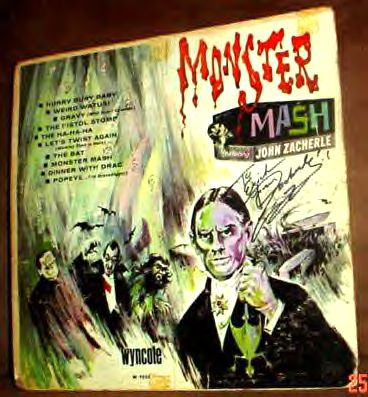

We segue in “Marcus’ Chariot” to an outraged Marcus who rides furiously to the palace after Nero denies him entry into Rome at the head of his troops. This brief religioso cue is animated by the Quo Vadis Domine Theme, now rendered reverently by alto flute, muted horns, harp and strings brillante. “Calvary” features a spoken narrative, which speaks of the brutal power of the Roman state, but portends of its demise by Christianity as we see scenes of Christ’s crucifixion. The theme rises up upon bass voices, adds tenor voices, and finally soprano voices, which all join and ascend in communion to culminate wondrously in a grand fortissimo climax! This is why I love film music!

Set against contrapuntal heraldic Roman fanfare we hear the glorious resound of the religioso choral Quo Vadis Domine Theme. Once again Rózsa makes a grand statement by juxtaposing his themes. “Main Title/Appian Way”, also a score highlight, opens the film as we see Marcus returning with his troops from victorious campaigns in Britannia. Rózsa alludes to the film’s spiritual narrative by infusing a religioso coloring to the piece through a sequence of dramatic major chords, which play against the entwined thematic flow. The juxtaposition of his strong, French horn laden and martial music and her tender lyrical flow born by strings and woodwinds is just wonderful. The opening “Overture” is a powerful and dramatic score highlight, which features fine interplay between the principle Lygia’s and Marcus’ Themes. In doing so he achieved a rare and perfect synergy between imagery and music. Given the complexity of the film’s spiritual narrative, he chose to infuse his score with a multiplicity of fine themes, motifs, songs, hymns, chorus, exotic dances as well as imperial fanfares and military marches. He also chose to augment the orchestra with instruments from antiquity, which included lyres, cytharas, buccina, salphinx, ethnic drums, sistrums and an exotic array of percussion. Since no ancient Roman musical script existed, he borrowed from surviving Greek sources from which Roman music later sprung. He sought to infuse his score to the extent possible, with ancient musical forms and so did extensive research and adaptation. It was felt that his warm, modal and melodic style would provide the grand sweep required for this epic film. Miklós Rózsa was a rising star in Hollywood and a natural choice for the film. The film was both a commercial and critical success, earning eight Academy Award nominations. Through their ensuing travails, Marcus converts and our lovers manage an escape to Sicily as an avenging mob, now aware that Nero burned Rome, storms the palace and brings Nero to a well-deserved end. To cover his guilt Nero falsely blames the Christians and unleashes a reign of terror with gruesome executions in the Coliseum. Our lovers are caught in the tide of history as an increasingly mad Nero terrorizes his court and ultimately sets Rome aflame in a stunning horrific conflagration. Set in imperial Rome during the reign of the maniacal emperor Nero (54 – 68 C.E.) we see a love story unfold between the pagan Marcus and the Christian Lygia.

They hired a fine cast, which included Robert Taylor (Marcus Vinicius), Deborah Kerr (Lygia), Peter Ustinov (Nero) and Leo Glenn (Petronius). Producer Sam Zimbalist and director Mervyn LeRoy saw an opportunity to create a grand epic by adapting Henryk Sienkiewicz’s 1896 novel Quo Vadis.


 0 kommentar(er)
0 kommentar(er)
